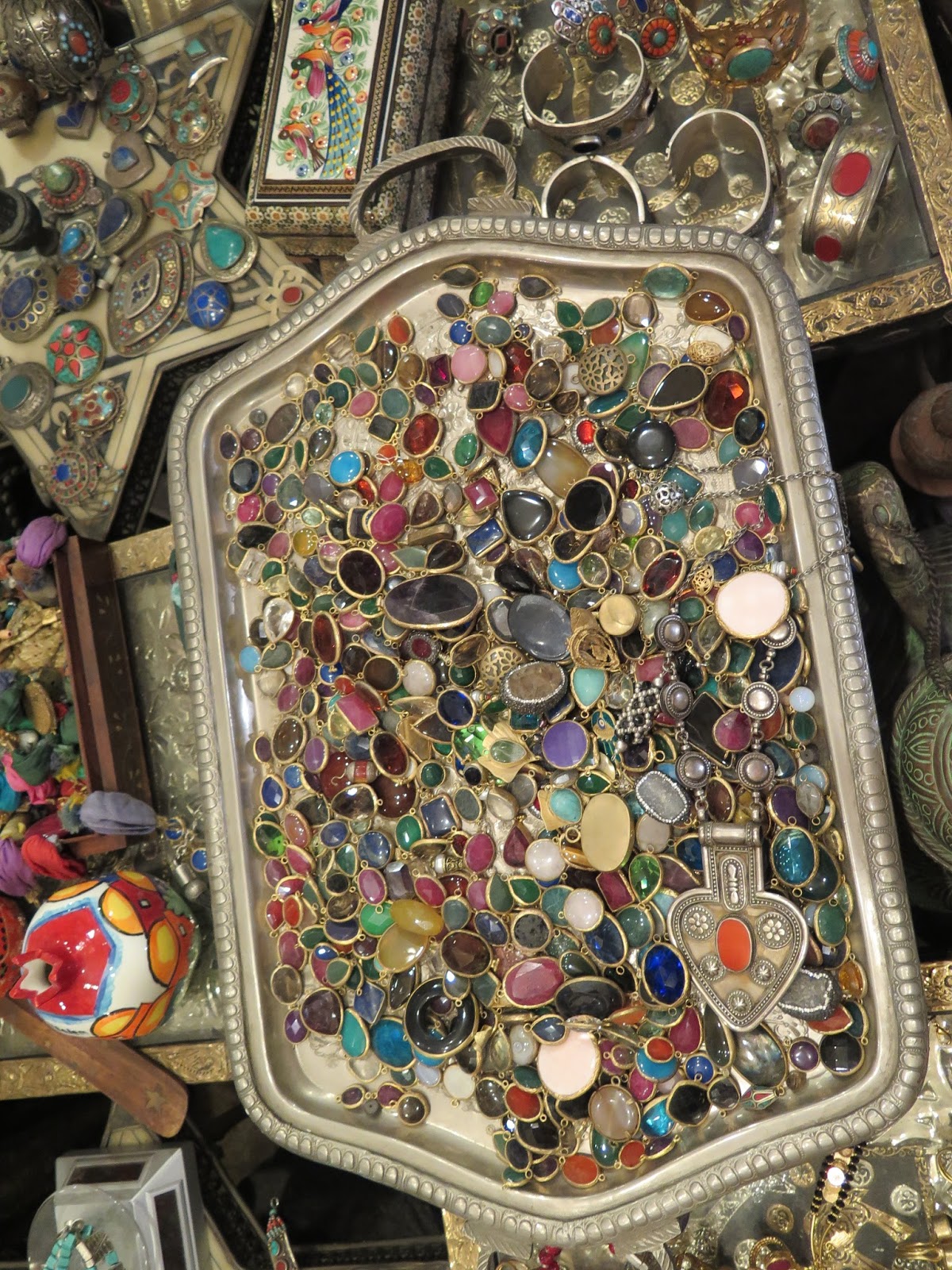It is always fun when the service couples and professors and their wives get together. We had a few hours on Sunday to get away so we took advantage of the time.
Photo: Jeff & Joyce.
As the Smiths prepare to leave Aug. 4,
we appreciated the invitation to explore another area of the city and a restaurant Jeff wanted to visit once again. For the first few months, we never realized there were modern places to explore, not to mention great places to shop that bring us back to the 20th century.
Photo: Mamila Mall Parking just ahead.
We piled into two cars and parked at Mamilla Mall in the underground parking. The empty parking spaces are marked with green lights. We had no idea how long we would be parked but we could leave our cars in covered parking and from here we would be on foot.
Photo: The system of parking here is awesome. When you go in, a photo is taken of your car and license plate so when you have paid and are pulling out, the gate automatically opens. It's a great system!
We left on foot and followed Jeff's lead.
The area of Ben Yehuda Street is always fun to walk around. This used to be a popular area where people shopped but when the
new malls were built, customers left and went to the newer stores. In the effort to attract visitors, the business district goes to great lengths to make the
area attractive and a place people want to return to. We LOVED the umbrellas! I can't imagine how many were hung to create this most attractive ceiling
of color. The last time we were here, Chinese lanterns were hung.
Photo: Janna and Doug Coombs and crazy Jeff. Jeff couldn't resist jumping into the photo! We are really going to miss him and Joyce.
We found another beautiful street and who wouldn't want to return to an area like this? There were open air restaurants along with some nice clothing shops.

'
Dr. Skinner said this belt shop was here the first
time he was here with his family. He and his family have lived here 4 or 5 times. When his family (17 of them) came to visit recently, they returned to this shop because his son wanted a new belt and said, "I want another just like this one!" and found the exact one still being made. That was more than 20 years ago so the belts they sell are quality merchandise.
Along the way we were pleasantly surprised to find a very nice park.
The art work in the newer
areas of Jerusalem is very contemporary.
Photo: Street art on the sidewalk.
As we walked, we saw a structure going up with another facing of stones but puzzled to see very large number painted on each block.
Photo: It was lunch time and Jeff was dying to have a hamburger at his favorite restaurant one last time. Garth and I ordered Greek salads (which were divine) but most everyone wanted hamburgers.
After lunch, we decided to walk back to the Old City and take the new service couple, Carol and Reg Christensen, to see the shop owned by Omar Mohammed. Omar is Muslim and we have purchased
a number of items from his store. His store is filled with many beautiful things.
Photo: Carol and Reg.
Do you see what I see?
Photo: I just learned that the blocks were numbered because they are remnants of the 1967 war and were originally part of the old archway near Mamilla Mall.
I love this butterfly art work.
Another interesting art piece. Do you recognize who this is?
Photo: Entrance to Jaffa Gate.
Photo: Chris and David Heiner. Chris left last night due the death of her father.
Omar's shop is filled with all kinds of antiques, ceramics,
hand needle work, handmade jewelry (Omar and his sons make the jewelry and set Roman glass and widow mites into pendants), furniture, and many other wonderful items.

'
Omar treats his customers royally and had fresh mint lemonade slush brought to each of us. It was delicious!
Photo: Doug relaxing. Omar boasts that his shop is 338 years old and has the deepest original well in the Old City. The building is 3 stories tall and his aged parents live on the floor above.
Photo: This camel lock caught my eye. I think I need to buy it!
Jeff has had his eye on an ancient headpiece (helmet in photo) along with an arm piece, sword, and shield. He has come to be a very good friend to Omar and his sons and hopes to buy this to take home.

Joyce, on the other hand, wants this crown.
Garth has his eye on this ancient tea pot. Gosh, we need to get out of this shop!
I'll bet you can guess what caught my eye!
Regardless, there are many wonderful things in Omar's shop and we love visiting it often.
Garth can't stop looking at this teapot.
I love the Armenian ceramics but not necessarily these colors.
Cats are everywhere and we seldom see dogs. This cat purrs contently as customers go in and out of the store.
We left Omar's store and went to an art shop. Garth loves this painting but when he asked the price, he suddenly lost interest. It was $12,000.00!! Seriously, we need to go back to the Jerusalem Center. It's always fun to look and drool over things we would love to have but then as Joyce says, "It's just ss!!" (That stands for stupid stuff.)
We left and had just enough time to get back to the Jerusalem Center so we could set up the auditorium for the Sunday night concert of an acappella choir. It was a great way to end our day.



























































